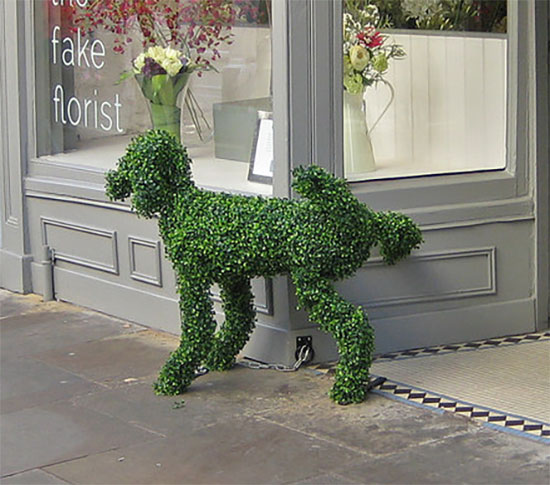
What is an Artificial Topiary?
Topiaries are popular decor items for both indoor and outdoor use. They are made with greenery or flowers and are constructed in very specific shapes. The most common topiary forms are simple geometric options, like a sphere or a cube. However, more complex topiaries may resemble animals or other characters. Artificial topiaries are made using faux plants and flowers instead of live ones. There are many advantages to using an artificial topiary instead of a live one in your home or office.
A topiary tree means many things to many people. To have a relevant conversation on a topiary tree, you need to ask the question, live, artificial, or preserved. Where will the topiary live or indoors or outdoors? Do I have the ideal topiary planter? Who is the topiary artist? Once you have the basic questions answered, you can plan for a topiary tree display.No Water Required
The biggest benefit of an artificial topiary is that you do not need to water it on a regular basis. Maintaining a live topiary can be time consuming, but artificial topiaries are much easier to take care of. Artificial topiaries won’t wilt over time, and they will maintain their appearance on their own. You also won’t have to worry about trimming the topiary to maintain its shape.
Easy to Clean
Another benefit of artificial topiarie treess is that they are very easy to clean. When you leave a topiary in the same position for an extended period of time, they can start to collect dust. Dusting and cleaning a live topiary can be difficult, because you don’t want to accidentally kill the plant. However, with a faux topiary, you can clean however you like and you won’t have to worry about damaging the plant.
Can Be Placed Anywhere
Another helpful benefit of artificial topiaries is that they can be placed anywhere in your home or office, because they don’t require any natural light. This gives you more flexibility when it comes to decorating your space - you can even put topiaries in rooms without windows to add a nice touch of green.
Look Authentic
Another helpful benefit of using an artificial topiary is that they look authentic. Even though you know that the topiary isn’t real, your guests won’t have to. The most authentic looking topiaries are an investment, but they can bring an element of real luxury into your space.
How are artificial topiaries made?
Most artificial topiaries use plastic components, particularly for the trunk and stems of the topiary. The flowers and leaves can also be made of plastic, although high quality artificial topiaries also will use silk leaves. These parts are constructed in a way that closely mimics the shape, texture, and color of a real topiary tree.
Are there any downsides to an artificial topiary?
The biggest downside to an artificial topiary is that they can be quite expensive. If you want a topiary that looks real, you will need to invest in one of the more expensive options on the market. Cheaper artificial topiaries can wear down quickly and start to look ragged.
Faux topiaries are a great addition to your home or office space. They go well with many different styles of decor, and they are very low-maintenance. They can even work as an outdoor topiary to make your yard stand out.
Animal Topiary
Animal topiary is the most popular artform we carry. Can you imagine flying pigs in formation from Papa pig to baby pig, oh so cute!Topiary Forms
Topiary Forms can be anything you want from a horse to a person. For example, you can have a family of flying pigs as a topiary formationOutdoor Topiary
Outdoor Topiary living outdoors either artificial or real takes on a new dimension for consideration for display. For example, live topiary selection should be to have a topiary in the correct hardiness temperature zone for survival and artificial topiary should have a metal frame that can sustain the elements of weather outdoors 24/7 and foliage that is made for outdoor use.Artificial Topiary
Artificial Topiary takes on the persona of a live topiary. For example, a faux boxwood can look like a real boxwood foliage topiary.Featured image credit: Pauline E / Creative Commons